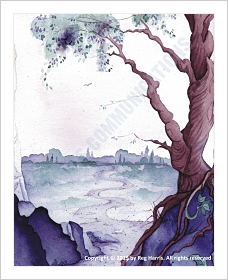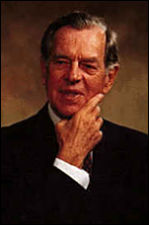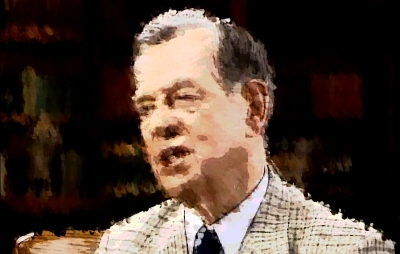Ironically, the characteristics that make Campbell’s work rich and compelling are also the characteristics that can make it difficult to apply his ideas to our everyday journeys.
Over the three-plus decades that I have studied and used the hero’s journey, people have often told me that they love Campbell’s work, but they have difficulty teaching it or applying its lessons to “real” life. Their difficulties are understandable. Campbell was a brilliant mythologist, teacher and storyteller, but his work can be difficult to apply to practical, everyday situations.
I share people’s fascination-frustration relationship with Campbell’s work. I read his books devotedly from 1986-1990, and still return to them regularly. I love his stories, his cosmic point of view, his poetic writing style and the daunting scope of his research. However, I share people’s frustration at trying to apply Campbell to our everyday journeys.

The Call to Adventure signifies that destiny has summoned the hero and transferred his spiritual center of gravity from within the pale of his society to a zone unknown. ~ Joseph Campbell~
In the early 1990s, that frustration led me into my own research on the psychology of the journey. I wanted to use the journey as a heuristic to help my students analyze, understand and compare literature and to allow them to transfer the themes and lessons from literature to their own lives. So I “left” Campbell to develop my own model of the hero’s journey.
To understand the difficulty in translating Campbell’s work to our everyday lives, we need to look at his audience and his goals. Campbell wrote primarily for an academic audience, not to provide real-life advice. His focus was on mythology and what myth could teach us about our own lives (though he seldom translated the lessons of myth into specific, practical suggestions for living).
His goal with the hero’s journey was to build a model that was complete enough to contain all the journey’s contingencies, yet general enough to encompass, at least to some extent, all journey myths. This forced him to be abstract and vague. When he did discuss the journey stages specifically, he tended to focus on their psychological (usually Jungian) and spiritual (usually Eastern) aspects, not their practical applications for daily living.
The ultimate goal for Campbell’s hero was spiritual liberation and a cosmic consciousness. For example, in The Hero with 1000 Faces (1949), Campbell writes of the apotheosis, the stage in which the duality of everyday life has been transcended, “This is a supreme statement of the great paradox by which the wall of the pairs of opposites is shattered and the candidate admitted to the vision of God” (pp. 170-171). This vision is cosmic and inspiring, but not the stuff of everyday life.

Joseph Campbell: Mythologist and philosopher
The paradox of strength
So, paradoxically, the characteristics that make Campbell’s work compelling and rich are also the characteristics that can make applying it to our everyday journeys difficult and frustrating. To be universal, he had to be vague. To be compelling, he had to tell stories, not provide analysis. To express the scope of his intellect, contain the spirituality of his subject, and engage his academic audience, his writing had to be dense and multi-layered. To encompass the profound scope and significance of his subject—to name the unnameable—he had to take flight in symbol and metaphor.
Using the Journey in Life
Translating Campbell’s work (or, more correctly, Hero’s Journey itself) into practical terms that we can use in our everyday lives has been the focus of my research since 1990. To do this, I had to go beyond Campbell’s work and explore psychology, philosophy and neurobiology. (For the story of my exploration of the Hero’s Journey, see My 40-Year Journey into the Hero’s Journey.)
On this site I am sharing many of the insights from that research, trying to put them into practical suggestions for using the Hero’s Journey and related concepts to enhance our lives. To explore these ideas see other posts to this blog or check out the articles in my Hero’s Journey library.
I also welcome your questions, insights and suggestions. Just contact me.
